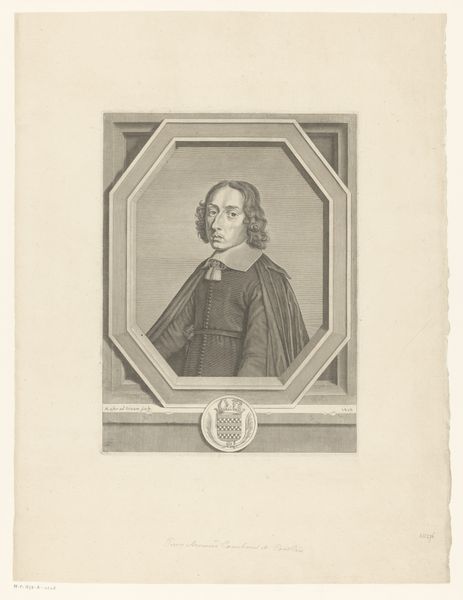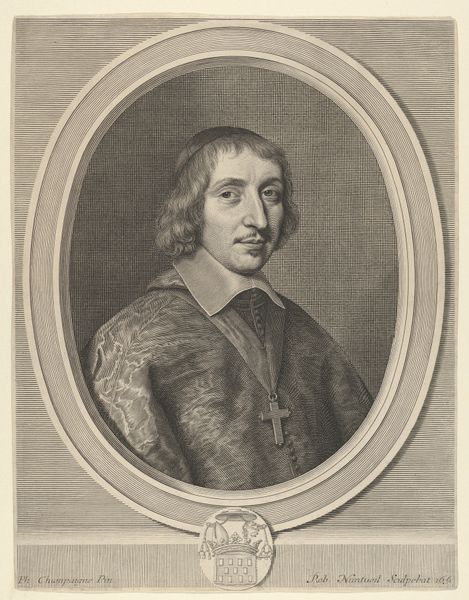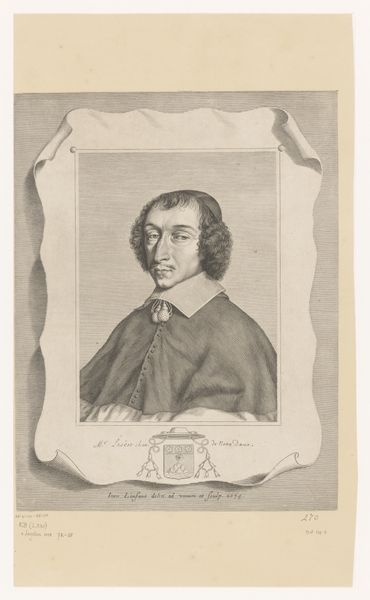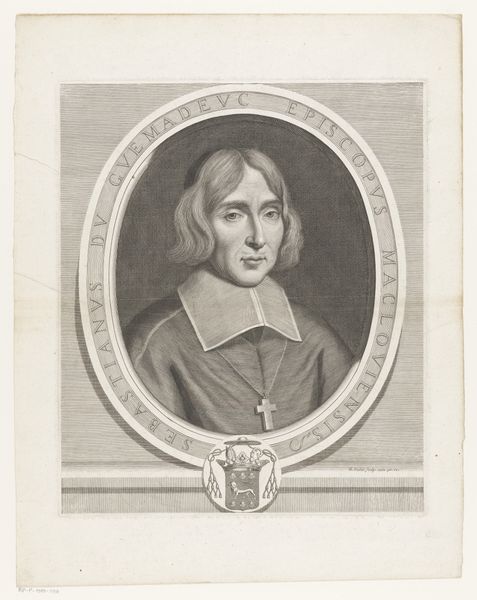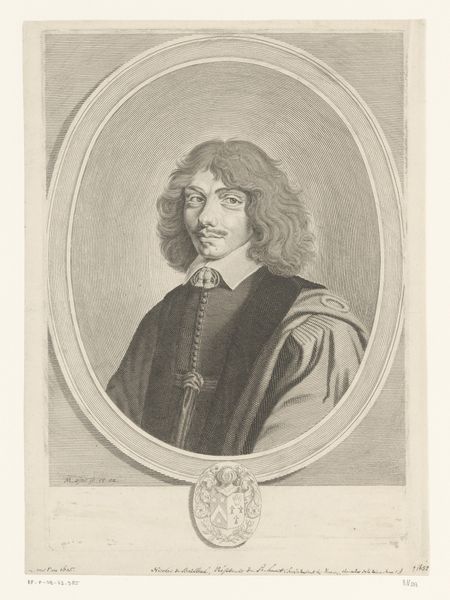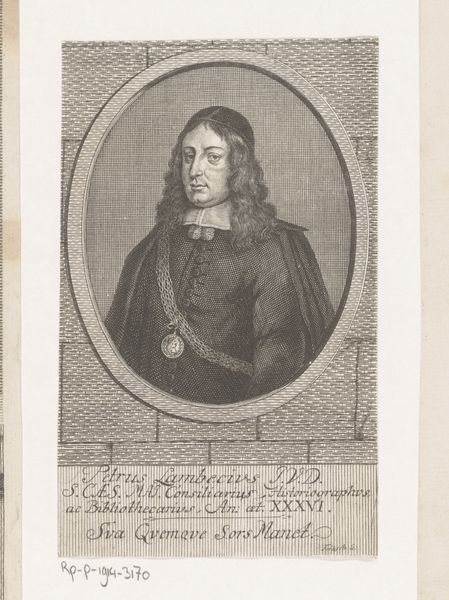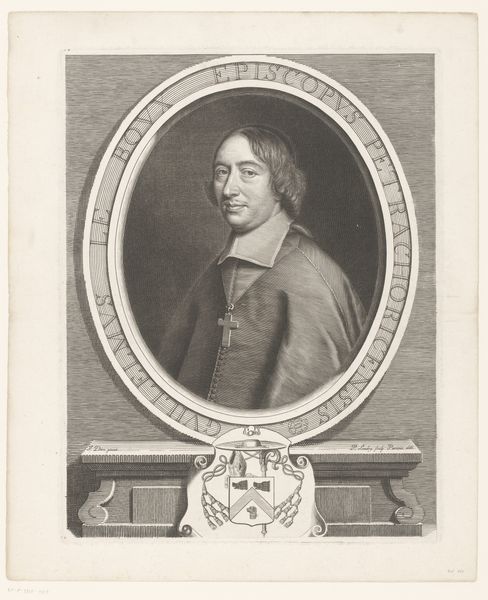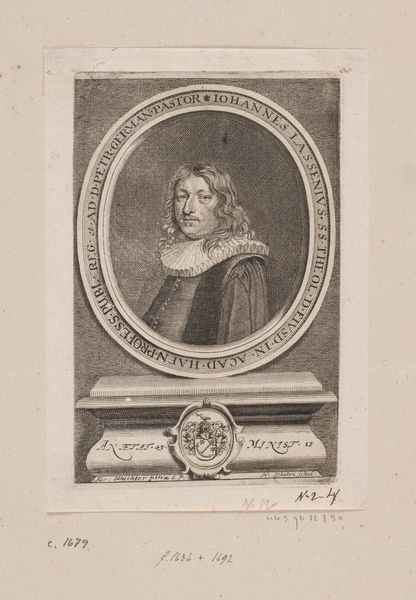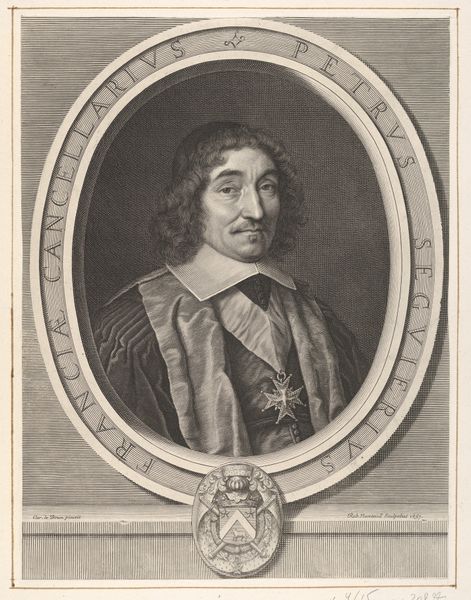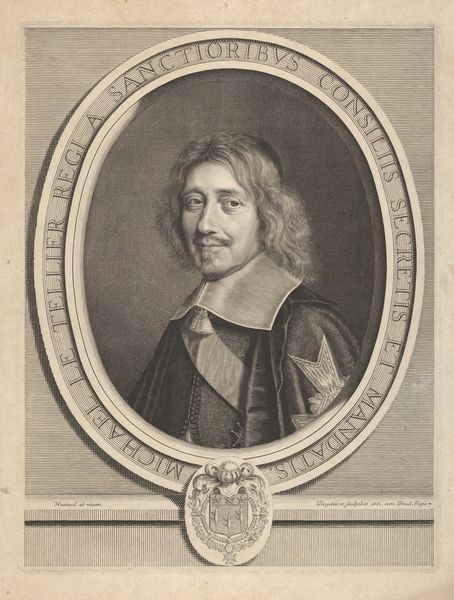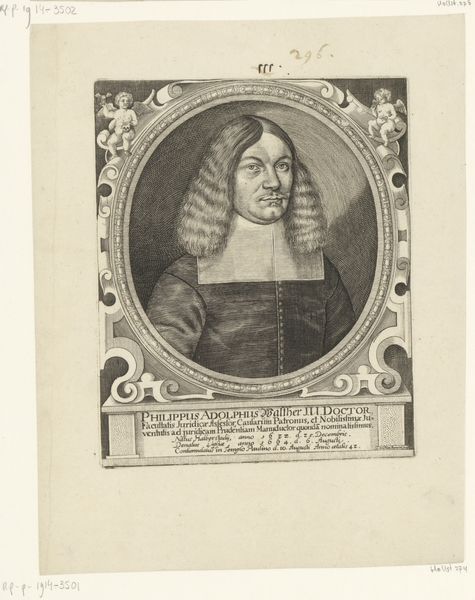
print, engraving
#
portrait
#
baroque
# print
#
old engraving style
#
portrait drawing
#
engraving
Dimensions: height 314 mm, width 231 mm
Copyright: Rijks Museum: Open Domain
Curator: I find this portrait to be quite arresting; the figure's direct gaze is almost unsettling. Editor: Indeed. Here we have "Portret van een onbekende man," or "Portrait of an Unknown Man," an engraving created sometime between 1600 and 1667, attributed to Michel Lasne, currently residing here at the Rijksmuseum. Its austere formality reflects a key aspect of the Baroque aesthetic. Curator: It does feel Baroque, doesn't it? So formal. But within that rigid framework, there’s a humanity that seeps through. I can’t help but wonder about the sitter – he looks almost hesitant. Editor: Note the composition; Lasne uses an oval frame, around which we find the symbolic indicators of ecclesiastical rank—the mitre and crosier on either side and a heraldic shield at the bottom. Semiotics of power, really. This structure isolates and emphasizes the subject's face. Curator: Funny, I completely missed those symbols on first glance. I was too busy pondering what stories those eyes could tell. You know, sometimes I think portraits are less about historical accuracy and more about the mood that the artist is trying to express through someone's likeness. Editor: And what of the materiality? It's a print. Multiples could be made; its impact wasn't singular, like a unique oil painting would have been. Dissemination was the purpose, likely reinforcing the Church's presence across a wider populace. Curator: So a kind of early version of mass media in a way. Thinking about it like that shifts my perception a little. Still, that contemplative stare... it clings to you. Even as a copy, it carries presence. Editor: Precisely. Lasne leverages line work beautifully to denote shadow and volume, achieving depth despite the flatness of the engraving medium. Look how the fabric drapes, catching and reflecting the light to build dimension in what might have otherwise felt like a flat image. Curator: I get drawn into considering that delicate balance of power and vulnerability—it adds such an intriguing complexity to the portrait, doesn't it? Almost against its will, that little crack invites me to project. Editor: And to interpret. These elements coalesce into an exercise in carefully mediated and encoded communication; a demonstration of technique and, in its replication, power. Curator: Okay, okay, fair point. But after stripping everything down to its bones, doesn’t the mystery, what persists past any symbol or function, remain most powerful in the end? That feeling?
Comments
No comments
Be the first to comment and join the conversation on the ultimate creative platform.
